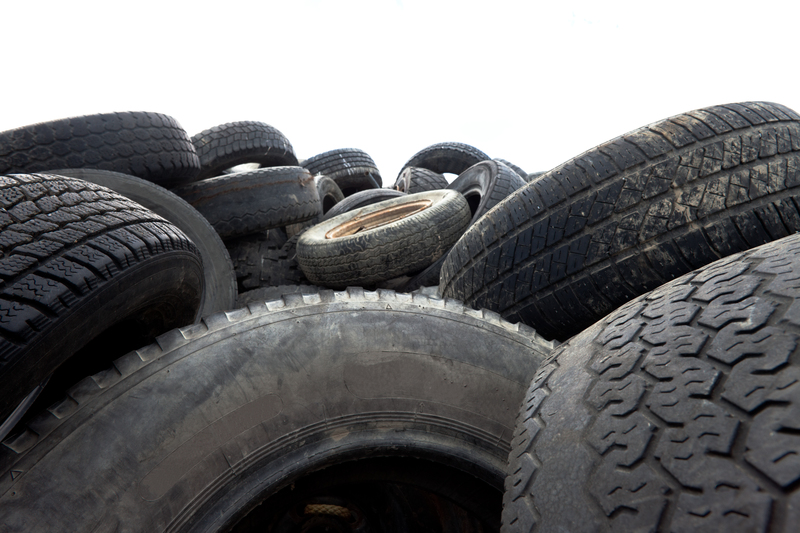Protecting Public Health by Disposing of PPE the Right Way
Personal protective equipment (PPE) has become an everyday staple, especially since the onset of the COVID-19 pandemic. Items such as face masks, gloves, face shields, and gowns play a crucial role in preventing the spread of infectious diseases. However, as the world uses billions of PPE items, improper disposal has become a pressing concern for public health and environmental safety.
This comprehensive guide explores why proper disposal of PPE is essential, the risks of careless handling, and detailed steps everyone can take to ensure we're protecting public health by disposing of PPE the right way. Whether you're a healthcare professional, essential worker, or an everyday citizen, understanding effective PPE waste management is critical for a safer future.
Why Proper PPE Disposal Matters
Protective equipment disposal isn't just a matter of cleanliness; it's a vital component in safeguarding collective wellbeing. Here are some compelling reasons why responsible PPE disposal is non-negotiable:
- Limits disease transmission: Used PPE may harbor viruses, bacteria, or pathogens, creating a risk of secondary infection if left in public or private spaces.
- Protects sanitation workers: Those who handle waste are at greater risk of exposure if PPE is not properly contained and labeled.
- Prevents environmental damage: Face masks, gloves, and other PPE made from plastics persist in our environment, threatening wildlife and polluting waterways.
- Keeps public spaces clean: Littered masks and gloves are unsightly and may contribute to negative perceptions of associated locations.
In summary, the proper disposal of personal protective equipment is a proactive step that protects public health, environmental health, and community aesthetics.

Understanding the Types of PPE and Their Disposal Needs
PPE comes in various forms, each with its own specific requirements for disposal. Here's a breakdown:
Face Masks
- Surgical masks: Generally intended for single use and may contain materials like polypropylene, which do not biodegrade.
- Respirators (N95, FFP2/3): Often used in healthcare; can contain electrostatic filters and require careful handling if contaminated.
- Cloth masks: Designed for reuse after washing; should only be discarded when damaged.
Gloves
- Latex or nitrile gloves: Petroleum-based and slow to decompose, these gloves should be disposed of as regular waste unless contaminated with hazardous materials.
- Vinyl gloves: Similar to nitrile and latex, but potentially more hazardous if incinerated due to chemical releases.
Other PPE
- Gowns, aprons, shoe covers, face shields: Often made of mixed materials, these items typically belong in general waste unless visibly contaminated or subject to local medical waste guidelines.
Understanding the type and use of PPE helps in determining the most appropriate disposal method--a crucial step in protecting community health and the environment.
Risks of Improper PPE Disposal
Mismanaging PPE waste has serious consequences. Here's what can go wrong when we fail to dispose of PPE the right way:
- Heightened Disease Spread: Discarded masks and gloves can become vectors for viruses and bacteria, increasing the risk of community transmission.
- Hazard to Wildlife: Animals may ingest or become entangled in PPE, causing injury or death.
- Microplastic Pollution: Many PPE items are made from plastics that degrade into microplastics, contaminating soil and water and entering the food chain.
- Waste Management Worker Exposure: Sanitation and recycling workers face increased exposure to pathogens and sharp objects when PPE is not properly segregated.
- Blockages and Litter: PPE flushed down toilets or thrown on streets can block sewage systems or contribute to extensive urban litter.
Takeaway: Disposing of PPE the right way isn't just about individual safety--it's a critical public health measure with broad consequences.
Safe and Sustainable PPE Disposal: Step-by-Step Guide
Follow these steps to ensure you're protecting public health by disposing of PPE correctly:
Step 1: Handle Used PPE with Care
- Always remove used masks and gloves by the straps or edges--avoid touching the front or outer surfaces.
- Perform hand hygiene before and after removing PPE, using soap and water or hand sanitizer.
Step 2: Securely Contain Waste
- Place used masks, gloves, and other single-use PPE in a lined garbage bin immediately after use.
- If caring for someone who is ill or if PPE was worn in a high-risk environment, double-bag the item before disposal.
Step 3: Label and Separate If Needed
- Households with COVID-19 positive individuals should follow local guidance, which may involve labeling or storing waste separately for 72 hours before collection.
- Do not dispose of PPE in recycling bins--these items are not recyclable through regular household streams.
Step 4: Dispose as General Waste
- For the general public, single-use PPE should go into the general waste bin (non-recyclable).
- Never flush PPE down toilets--it can cause blockages and environmental contamination.
Step 5: Clean Hands After Disposing
- Once PPE is disposed of, always wash your hands thoroughly or use hand sanitizer if soap and water are not available.
PPE Disposal Protocols in Healthcare and Occupational Settings
Healthcare institutions and workplaces with high PPE usage require additional precautions:
- Clinical Waste Bins: Items visibly contaminated with blood, body fluids, or infectious agents must be disposed of in yellow clinical waste bags or bins, as per local healthcare regulations.
- Sharps Containers: Never place needles or sharp objects with general PPE waste; use only approved sharps containers.
- Segregation and Labeling: Proper labeling and segregation of infectious waste safeguards staff and waste handlers from accidental exposure.
- Follow Local Guidelines: Always adhere to protocols specific to your ward, hospital, or laboratory.
Environmental Considerations: Reducing the Impact of PPE Waste
With billions of masks and gloves entering the waste stream each month worldwide, the environmental impact of PPE disposal is staggering. Consider these sustainable PPE practices where possible:
Use Reusable PPE
- Cloth face masks can be washed and reused, significantly reducing the volume of single-use waste.
- Reusable face shields and goggles are preferable for non-medical settings.
Eco-Friendly Alternatives
- Opt for biodegradable masks and gloves where available, made from materials like bamboo fiber or natural latex.
- Support companies and initiatives developing recyclable or compostable PPE solutions.
Participate in PPE Collection Programs
- Certain organizations and municipalities provide special bins for PPE waste. Using these ensures materials are safely incinerated or treated rather than ending up in landfills or waterways.
Educating the Public: Spreading the Message of Correct PPE Disposal
Public education is vital in changing behaviors and attitudes toward PPE disposal. Here's how communities can get involved:
- Run awareness campaigns: Use social media, posters, and local media to inform residents about disposing of PPE the right way.
- Set up public disposal bins: Strategically place bins in parks, public transport stations, and other high-traffic areas.
- Include PPE guidance in schools and workplaces: Training and reminders ensure everyone understands their role in keeping public spaces safe.
- Involve youth and local groups: Grassroots initiatives can be powerful advocates for responsible waste management.
The more people who understand and adopt correct PPE disposal, the stronger our collective defense against disease spread and environmental harm will be.
Frequently Asked Questions About PPE Disposal
1. Can I recycle my face masks or gloves?
No. Most disposable masks and gloves are not designed for household recycling and can contaminate recycling streams. Always dispose of them in the general waste bin unless local authorities provide PPE-specific recycling options.
2. Is it safe to throw PPE in household trash?
Yes, in most instances. However, always bag your used PPE and dispose of it securely. If someone in your home is ill, consult your local health department for additional instructions.
3. Why shouldn't I flush PPE down the toilet?
Flushing masks, gloves, or wipes causes plumbing blockages and can lead to environmental contamination as these materials do not break down like toilet paper.
4. Are biodegradable masks better for the environment?
Yes, provided they break down quickly in natural conditions. Look for certification or supplier information to ensure claims of biodegradability are genuine.
5. What about PPE from workplaces?
PPE used in workplaces, particularly healthcare settings, may be classified as hazardous or clinical waste and should be handled as per workplace protocols to prevent contamination or illegal dumping.

Policies and Global Initiatives for Safe PPE Waste Management
Governments, NGOs, and international agencies are stepping up efforts to address PPE waste challenges at the source:
- World Health Organization: Recommends strict guidelines for healthcare PPE waste management, emphasizing incineration or advanced autoclaving of infectious material.
- Local Government Programs: Many cities have introduced dedicated PPE litter patrols and special bins during the pandemic.
- Innovation Grants and Research: Funding is being directed toward developing safe, low-impact PPE materials and recycling or decomposition technologies.
- Legislation: Some jurisdictions now fine improper disposal of masks and gloves in public spaces as an environmental crime.
By staying aware of and supporting these initiatives, individuals and businesses can help drive lasting change in the way we all handle PPE waste.
Conclusion: Every Action Counts in Protecting Public Health
Disposing of PPE the right way is a simple yet powerful act that benefits us all. With a few mindful steps--safe handling, secure containment, responsible disposal, and community education--we can minimize risks to ourselves, each other, and the planet. Your personal commitment makes a difference.
As our reliance on personal protective equipment continues, let's all help set a standard of responsible PPE waste management. Together, we're not just keeping our communities clean; we're actively protecting public health and safeguarding our environment for generations to come.
Make the right choice--dispose of your PPE properly, every time.